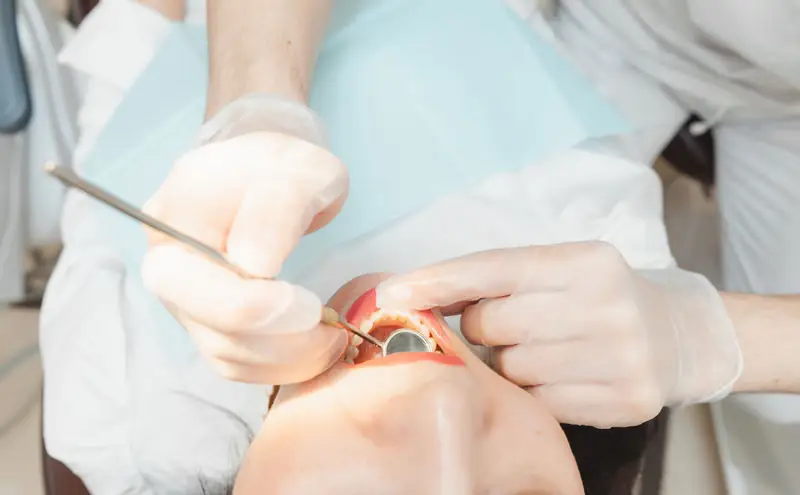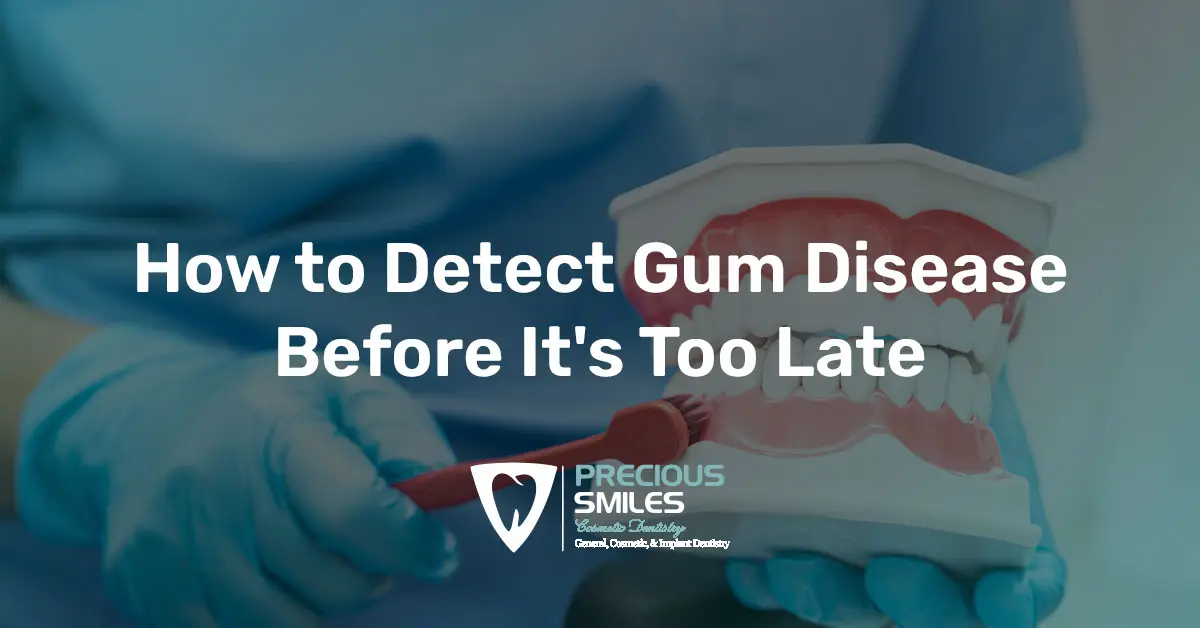Gum disease is one of the most common—yet most overlooked—oral health issues today. It affects millions of people worldwide, often without any initial pain or clear symptoms. Many don’t even realize there’s a problem until it’s too late. But the truth is, gum disease rarely appears overnight. It develops gradually, giving off warning signs long before serious damage occurs.
In this blog, we’ll dive deep into how to recognize the early signs of gum disease, understand the differences between gingivitis and periodontitis, identify risk factors, and learn how to take action before the damage becomes irreversible.
What Are the Early Symptoms of Gum Disease?
The first stage of gum disease is known as gingivitis, and thankfully, it’s both common and reversible—if caught in time. Here are the early signs you should never ignore:
- Red or swollen gums: Healthy gums should be firm and pale pink. If they appear puffy, irritated, or unusually red, this may be your body’s response to bacterial buildup.
- Bleeding during brushing or flossing: Occasional light bleeding may not seem serious, but if it happens regularly, it’s often a clear sign of inflamed gums.
- Persistent bad breath or a bad taste in the mouth: Bad breath that doesn’t go away even after brushing can be a signal of bacterial activity beneath the gumline.
- Gum sensitivity or tenderness: If your gums are sore to the touch or react strongly to hot or cold foods, this could be a warning sign.
Ignoring these symptoms allows plaque and bacteria to thrive—eventually leading to more advanced stages of gum disease.
Gingivitis vs. Periodontitis: What’s the Difference?
Understanding the difference between gingivitis and periodontitis is essential to recognizing the urgency of proper treatment:
Gingivitis:
- The earliest stage of gum disease
- Caused by plaque buildup along the gumline
- Symptoms are mild and reversible with good oral hygiene
- Gums may be red, swollen, and bleed easily
Periodontitis:
- Advanced form of gum disease
- Occurs when untreated gingivitis causes gums to pull away from the teeth, forming pockets that harbor infection
- Leads to bone loss, gum recession, loose teeth, or even tooth loss
- Requires professional treatment, and damage may be permanent
The transition from gingivitis to periodontitis can happen silently—and quickly—if proper care isn’t taken. Early intervention is the key.

Common Risk Factors That Accelerate Gum Disease
While anyone can develop gum disease, certain lifestyle habits, health conditions, and genetic factors increase your risk:
- Poor oral hygiene – Not brushing or flossing regularly
- Smoking or tobacco use – One of the most significant risk factors
- Diabetes – Poor blood sugar control weakens the body’s ability to fight infection
- Stress – Affects the immune system’s ability to respond to gum infections
- Hormonal changes – Such as during pregnancy, menstruation, or menopause
- Medications – Some reduce saliva flow, which helps protect the mouth
- Genetics – Some people are more susceptible to severe gum disease, even with good habits
Understanding these risk factors can help you adapt your oral care routine and consult a dentist proactively if you fall into a higher-risk group.
When Should You See a Dentist?
If you’re noticing any of the early warning signs, it’s time to schedule a visit to your dentist. Even if symptoms seem minor, a dental checkup can help:
- Identify the stage of gum disease
- Provide professional cleaning to remove plaque and tartar
- Offer advice on brushing, flossing, and mouthwash options
- Detect other potential issues that could worsen your condition
For those with chronic health conditions, regular dental visits (every 3–6 months) are essential to stay ahead of potential gum problems.
At-Home Prevention Tips to Protect Your Gums
Good oral hygiene is your first line of defense against gum disease. Here’s what you can do daily to protect your smile:
- Brush at least twice a day, using a soft-bristled toothbrush and fluoride toothpaste
- Floss daily to remove food and plaque from between teeth and under the gumline
- Use an antimicrobial mouthwash to help reduce bacteria
- Avoid tobacco products
- Stay hydrated—saliva naturally helps wash away food particles and bacteria
- Eat a balanced diet, rich in vitamins C and D, which support healthy gums
- Replace your toothbrush every 3–4 months or after illness
Making these habits part of your daily routine can drastically reduce your risk and help reverse early gum inflammation.
Pro Tip: Perfect Your Technique
Most people brush too hard or not long enough. To avoid damaging gums, brush gently in circular motions for at least two full minutes, and don’t skip the tongue—bacteria love hiding there too.
When flossing, curve the floss into a “C” shape around each tooth and move it up and down to remove debris without hurting the gums.
Gum disease doesn’t have to catch you off guard. The early signs are subtle, but if you listen to your body, maintain good habits, and visit your dentist regularly, you can prevent or reverse gum damage before it becomes a bigger issue.
Your gums are the foundation of your smile—treat them with care, and they’ll support your health for years to come.



